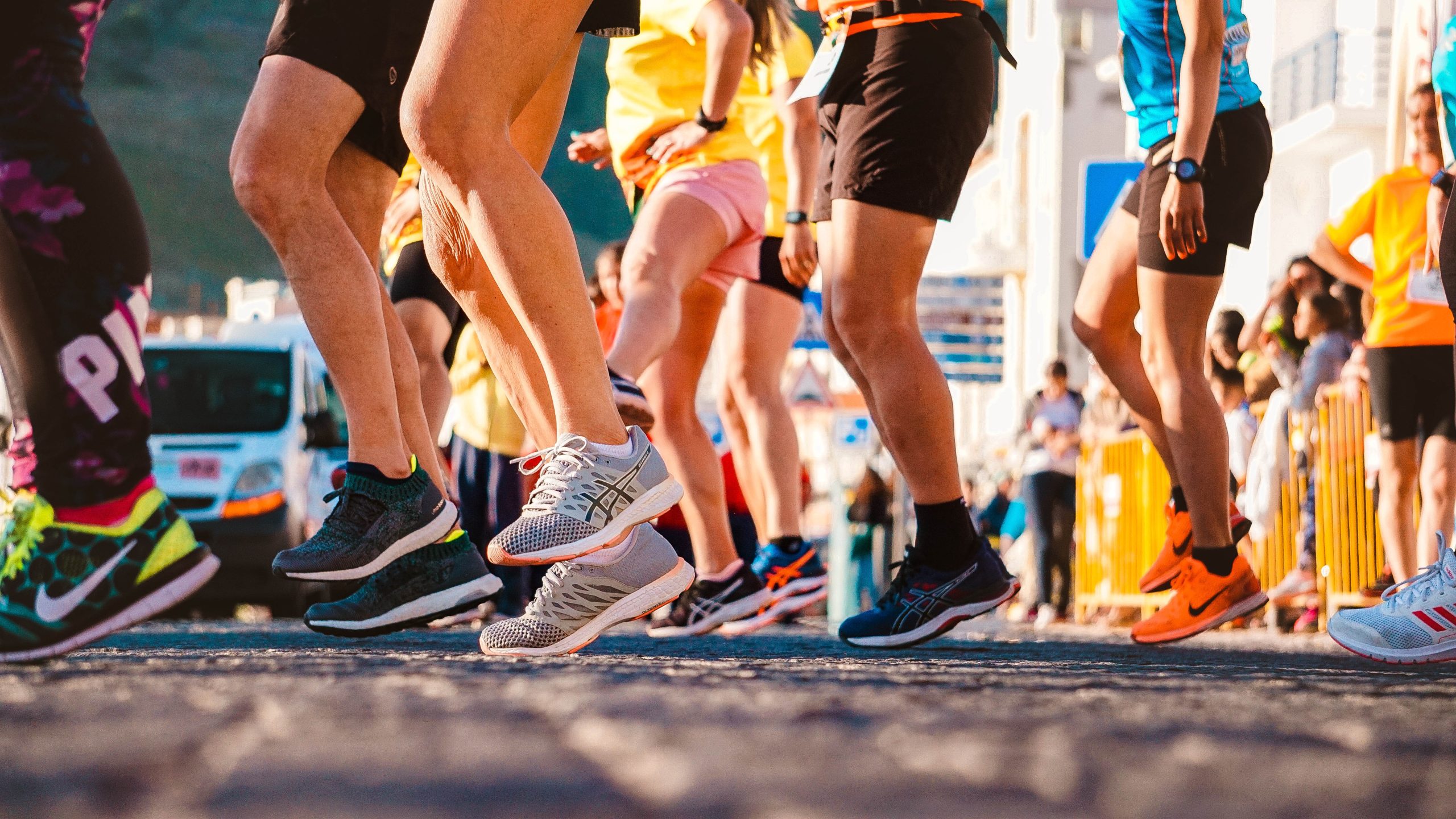
The field of running has exploded in recent years!
More and more runners are taking to the streets or even nature trails, and sometimes even the waiting rooms of physiotherapy clinics 😉
One of the main challenges when starting out in running is finding the right shoe. After all, every company says its shoe is the best, the most absorbent, the most bouncy… Listening to them speak, you’d think the shoes they sell are going to run for you!
Despite all this marketing, we still see far too many people running in shoes that are poorly adapted to their needs, and this can unfortunately contribute greatly to injuries, discouragement and even giving up this great sport.
So here’s an easy guide to help you choose your next pair of running shoes, inspired by Olivier Adams’ 8 years working as a running advisor and analyst in a specialized boutique!
Let’s start by outlining the important aspects to consider when making your purchase, and end with a little decision-making tree to help you compare the different brands available to you according to your needs!
Features to consider :
- How will your shoes be used? What’s your priority?
The first thing we’d like you to think about is how you’re going to use your new shoes! You’ll tell me, of course, that it’s for running. But how many kilometers a week? Is it to do intervals and break records? Long outings to protect your knees? The occasional 5km run and not have to spend too much money?
There are several possible scenarios, and they form the basis of your choice of shoes!
Note that a regular running shoe will have a lifespan of about 800-1000km… That’s one of the reasons why we recommend using them only for running! Put them to good use!
For today, in order to lighten the article, we propose to ignore performance shoes from our minds. However, don’t hesitate to ask for an article on performance shoes, as Oliver will be delighted to tell you more about them!
- Neutral shoes, or stability?
The second most important question we need to answer is whether you need a neutral shoe or one with arch support.
Without getting too technical, a neutral shoe is made for feet with a regular arch, and stability shoes are made for those with flat feet or a tendency to “spill over” their shoes, or what we call over-pronate.
If you’re not sure what your foot arch looks like, the image below is here to help you. Otherwise, most advisers in specialist stores will be able to guide you through the process.

- Cushioning
The next important aspect to consider is the shoe’s level of cushioning or absorption. Generally speaking, the higher the level of cushioning, the more the shoe will have a “cloud” effect under your feet, and the more it will absorb the impact of each stride on your body.
To help you decide, try different levels of cushioning to feel the difference. We usually recommend more cushioned shoes for those who want to protect their joints, are heavier runners, have pain or run long distances! Less absorbent shoes are often firmer, faster, and allow the runner to feel the ground beneath his foot.
- Inclination
The inclination, or “drop” of the shoe, often doesn’t deserve all the attention it gets. However, we must mention it here, because you’re bound to hear a lot about it!
The incline represents the difference in height between the back of the shoe and the front. It is not an indication of sole thickness! Indeed, a very minimalist-looking shoe could have a significant difference in height between the front and the back, and an astronaut’s shoe could be just as thick along the entire length of the sole and therefore not have much of a slope. There are currently shoes on the market with inclinations ranging mainly from 0mm to 12mm.
The thing to remember is that the lower the inclination, the more natural the shoe will tend to be (since it’s closer to the 0mm inclination we have when we’re barefoot). More natural also means more demanding on the muscles. In fact, you’ll soon feel the slight incline in your calves and Achilles tendon! Watch out for injuries if your body isn’t ready or not used to it!
A steeper incline, on the other hand, will better protect your calves and Achilles tendon, but may cause you to land more on your heels.
It’s up to you to decide (with the help of your therapist if necessary!) which incline would be best for you, based on what I’ve mentioned above!
- Price!
As a final point of consideration, we couldn’t resist discussing the price of the shoe with you!
Obviously, we don’t all have the same budget to spend on a pair of shoes. However, know that a good pair of training shoes will range from $139 to $250. If you’re paying less than that, ask yourself if this is a good pair of shoes for you, if it’s really a jogging shoe and if the quality meets your needs for protection, comfort and durability. 250$ divided by a lifespan of 1000km, that’s practically free.
But you don’t always have to pay a lot! The price often goes with the level of cushioning. As a general rule, the more absorbent, the more expensive. Which brings me back to point 3! Don’t hesitate to buy previous years’ versions (companies release a new version every year), as they are often discounted!
Finally, allow yourself some time on the day you decide to go shopping for a new pair. It can be a long process, and it’s important to take the time you need to be 100% satisfied with your choice.

A little tip from Olivier: Try not to rely AT ALL on the style and color of the pair you’re trying on. Your feet will decide for you! The choice of color can be made once you’ve found the most comfortable pair.
To help you choose the right shoe, analyze your running pattern or answer any other questions, don’t hesitate to make an appointment with Olivier!
We look forward to seeing you on the roads/trails or even in the clinic.





